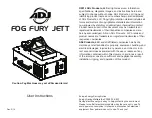
Attaching the embroidery foot
133
4
— — — — — — — — — — — — — — — — — — — — — — — — — — — — — — — — — — — — — — — — — — — — — — — — — — — —
Removing the embroidery foot
a
Press
(Needle position button) once or
twice to raise the needle.
X
The needle is raised.
b
Turn off the sewing machine.
c
Raise the presser foot lever.
a
Presser foot lever
X
The presser foot is raised.
d
Loosen the presser foot holder screw and
remove the embroidery foot "Q".
Turn the screwdriver toward the back.
e
Attach the presser foot holder.
• For details, refer to "Attaching the presser foot
holder" (page 42).
1
1
SE-BrotherE_sgml.book Page 133 Monday, June 30, 2003 3:44 PM
















































